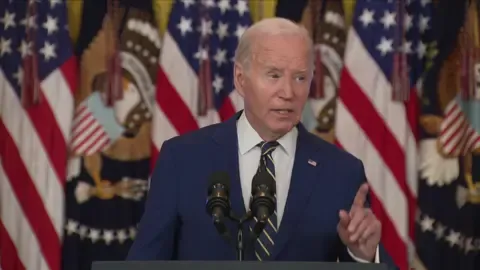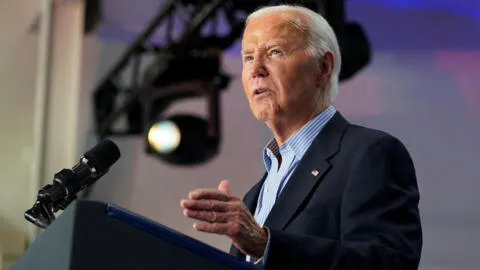The United States has reversed its stance on providing M1 Abrams battle tanks to Ukraine, announcing it will send 31 tanks to the region. This decision comes as a significant shift in the country’s stance, as the US had previously argued that the tanks were too difficult for Ukrainian troops to operate and maintain. However, the decision was made after Germany agreed to send 14 Leopard 2 A6 tanks from its own stockpile.
According to US President Joe Biden, the decision was made to equip Ukrainian forces with the necessary tools to counter Russia’s evolving tactics and strategy on the battlefield. Biden stated that Ukrainian forces are working to defend the territory they hold and preparing for additional counter-offensives and that they need to be able to counter Russia’s evolving tactics.
The announcement marks a significant turning point in the war in Ukraine, as European allies have agreed to send enough tanks to equip two Ukrainian tank battalions, or a total of 62 tanks. The decision was made possible through “good diplomatic conversations” between the US and Germany, which had previously been at odds over the issue.
The package deal announced by the US includes eight M88 recovery vehicles, which are tank-like tracked vehicles that can tow the Abrams if it gets stuck. The tanks will be sent to Ukraine through the Ukraine Security Assistance Initiative, which means that it is likely to be many months before the tanks are actually on the battlefield.

Joe Biden (Via Joe Biden/Twitter)
Russia has responded to the decision with criticism, with Russian ambassador to Germany Sergey Nechayev calling Berlin’s decision to send Leopard 2 tanks to Ukraine “extremely dangerous”. Nechayev stated that the move “shifts the conflict to a new level of confrontation and contradicts the statements of German politicians about their reluctance to get involved in it”.
Despite the criticism, the decision to send tanks to Ukraine is seen as a significant step forward in the war effort. The tanks will likely play a crucial role in helping Ukrainian forces break through entrenched Russian lines and gain control of key territories.
The decision to send the tanks has also sparked concerns about the complexity of the vehicles and the need for extensive training for Ukrainian troops. The Abrams is a high-tech vehicle that requires extensive maintenance and logistical support, which will likely pose significant challenges for Ukrainian forces.
However, the US believes that the benefits of providing the tanks outweigh the challenges and that the decision will ultimately help to shift the balance of power in the war in Ukraine. The decision is also likely to have significant implications for the war effort, as it marks a significant escalation of the conflict and a move away from the US’s previous stance of providing military support to Ukraine while avoiding direct involvement in the conflict.











































